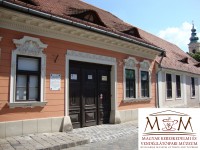Fekete vékony keretben, jobb oldalon. arany alapon három ruhátlan női alak tapossa a szőlőt egy kádban, mellette fehér alapon fekete és narancssárga felirat: ászári EZERJÓ.
Aranykalász Mg. Termelőszövetkezet termése 0,7l.
A tsz 1950-1991-ig működött, Ászár viszont csak 2002-től önálló község.
Az ezerjó jellegzetes régi magyar szőlőfajta, fehér bakator és budai fehér néven is ismerik. Nagy savtartalmú, "kemény" bort ad. A móri borvidék jellemző fajtája, de az Alföldön is termesztik. Több újabb fajta nemesítéséhez felhasználták az 1970-es és 80-as években (pl. zenit, zengő, zeus, jubileum 75).
en

















